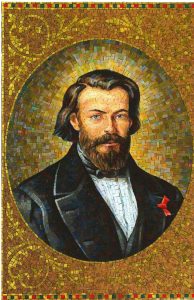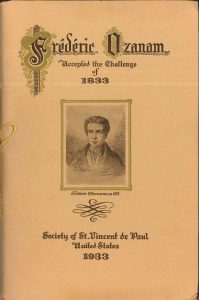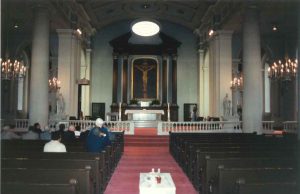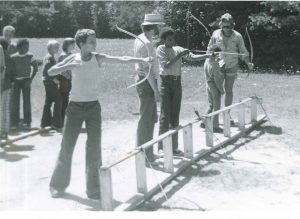An Apostleship of the Laity: The St. Vincent de Paul Society
Later this month, a mosaic of Blessed Antoine Frédéric Ozanam will be dedicated in the Basilica of the National Shrine of the Immaculate Conception here in Washington, D.C. At that time, members of the Society of St. Vincent de Paul will gather in celebration of their 175th year of existence. Though the Society’s name comes from their patron Saint, Vincent de Paul, a seventeenth century servant of the poor, Ozanam was the chief force behind the establishment of the organization in Paris, France, in 1833. As such, the Society became a member of the Vincentian Family, a group of Catholic organizations that includes the Congregation of the Mission and the Daughters of Charity of St. Vincent de Paul.

Ozanam took his Catholic teaching seriously. A scholar of Catholic social doctrine, he was once accused of being all talk and no action. His response was to found a group of men whose goal was direct service to the impoverished of Paris. Soon after the founding, the members carried food and other necessities directly to the homes of the poor. Key to the Society’s identity is the “apostleship of the laity,” hence members were parish based and comprised of lay members who ministered to their own communities. Their 1834 annual report noted that:
We understand very well that charity must be done in secret, that the work must be unobtrusive. Here we are not strangers to one another; what we have done has been accomplished with the cooperation of one another. The principal end of our association is to do everything with one heart and one soul, of a sort that we recount to one another the different services we have delivered not to be adulated but to give advice and mutual encouragement, to give better service.[1]

Reflecting the necessity for such services, particularly in a rapidly industrializing world, the Society expanded rapidly outside of France. When Bishop John Timon of Buffalo, serving in St. Louis at the time, visited France and saw the work of the Society, he went about establishing the group’s first conference in St. Louis, Missouri in 1845.[2]
The Society’s rule called for “visiting the poor in their dwellings” and the distribution of “moral and religious books” especially to children, but in the United States, these activities expanded from activities like supplying food to needy families and distributing rosary beads to running thrift shops, day nurseries, and youth camps, visiting nursing homes, among other activities.

The National Council in the United States began sponsoring foreign Councils in third world countries with its twinning program during the 1970s-1990s. Long-serving executive secretary Dudley Baker served thirty years, from 1955-1985, and helped establish many modern charitable organizations. Baker not only aided several presidents during his tenure, but also helped to modernize the society in America. Though the society in America has focused on disaster relief throughout its history, a greater emphasis has been placed on this recently, especially through the training of Rev. Ronald Ramson and the National Council’s Charity Seminars.
The Society is organized into five levels. The first level is the International Council in Paris, France that oversees the organization throughout the world. The second level is the National Council, which oversees each individual country’s society. The third level is the Diocesan Councils, of which there are 51 in the United States that oversee individual Councils in the society. The fourth level is the District council which oversees all the individual conferences throughout the United States. Lastly, at the fifth level are the conferences, based on the parish level. Headquartered in St. Louis, the Society has nearly 100,000 members in the U.S., and more than 800,000 members worldwide.

The Society’s records offer an extensive collection of organizational files, but includes also publications and audio-visual equipment from the society. Among the files are organizational correspondence, records from executive meetings, yearly reports and bulletins, membership files for the society and regional files from different councils, and financial files for the Society’s thrift stores. Many of these materials date back to the beginning of the Society in the United States. Also, there are videotapes and audiotapes of society meetings.
See the finding aid for the records of the Society of St. Vincent de Paul here
For blogposts on other Catholic charitable activities, see these posts on Monsignor John O’Grady, pioneer in Catholic charity: https://www.lib.cua.edu/wordpress/newsevents/9465/ and https://www.lib.cua.edu/wordpress/newsevents/9315/ as well as this post on the history of the National Catholic School of Social Work at The Catholic University of America: https://www.lib.cua.edu/wordpress/newsevents/10957/
[1] Raymond Sickinger, Antoine Frédéric Ozanam (Notre Dame: University of Notre Dame Press, 2017), chapter 3, “The Society of St. Vincent de Paul,” 61-62.
[2] The Encyclopedia of American Catholic History, Michael Glazier and Thomas Shelley, eds. (Collegeville, MN: Liturgical Press, 1997) p. 1249-1251.:
